Best Heritage Sites in Karachi You Must Explore
KoKarachi, Pakistan’s bustling megalopolis and fiscal mecca, is frequently associated with its vibrant megacity life, littoral charm, and different population. But beyond its ultramodern face lies a treasure trove of history staying to be explored. From colonizer- period structures to centuries-old sanctuaries, Karachi is home to numerous literal gems that speak volumes about its rich history. Whether you’re a history buff, a curious rubberneck, or a original wanting to rediscover your megacity, then are the top literal spots in Karachi that offer a fascinating regard into its artistic and architectural heritage.
Mohatta Palace – A Royal Legacy
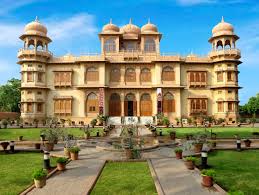
Nestled in the soul of Clifton, the ** Mohatta Palace ** is one of Karachi’s most iconic literal milestones. Built in 1927 by Shivratan Chandraratan Mohatta, a fat Hindu businessman, the palace was initially intended as a summer home. Its Indo- Saracenic armature, complete with polls, jharokhas( sundecks), and intricate gravestone busts, is a sight to behold. moment, the palace has been converted into a gallery showcasing the artistic and cultural heritage of Pakistan. From rare vestiges to rotating art exhibitions, Mohatta Palace invites callers to step back in time and experience the majesty of the history.
Must- see features
- Ornate stained- glass windows
- Rooftop view of Clifton
- Contemporary and literal art exhibitions
Quaid-e-Azam Tomb
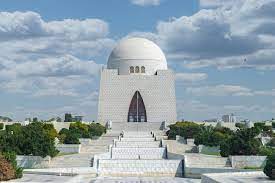
The Final Resting Place of the Author ** No visit to Karachi is complete without paying tribute to ** Quaid-e-Azam Muhammad Ali Jinnah **, the founder of Pakistan. His tomb, also known as ** Mazar-e-Quaid **, is a sign of public pride and an architectural wonder. Built in the 1960s, the tomb is made of white marble with twisted bends and a bobby pate. The serene surround include lush auditoriums and cradles, creating a tranquil space among the megacity’s hustle.
Highlights
- Guard- changing form
- Museum casing Jinnah’s particular particulars
- hard sepultures of Fatima Jinnah and Liaquat Ali Khan
Frere Hall A social- period Gem
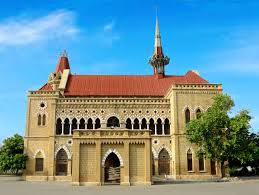
Erected in 1865 during British rule, Frere Hall stands as a testament to social armature and intellectual life in Karachi. Firstly a city hall and library, it’s now home to a public library and hosts colorful artistic events and exhibitions. The structure showcases Venetian Gothic design and features showpieces by Pakistan’s famed artist ** Sadequain **, painted on the ceiling of the main hall. Frere Hall is n’t just a literal monument; it’s a artistic mecca where art, literature, and history meet.
Stylish time to visit Sunday art emporium and book expositions Do not miss The ceiling tempera “ Arz- o- Samawat ” by Sadequain
Empress Market A regard into social Commerce
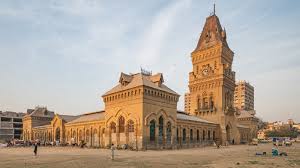
In the heart of Saddar lies Empress Market, a relic of the British Raj. erected in the 1880s and named after Queen Victoria, the request is a bustling marketable mecca where old meets new. Its towering timepiece palace, refocused bends, and high ceilings reflect social design. Though it’s a performing request dealing everything from spices to faves , it also offers a fascinating sapience into Karachi’s history. The request’s narrow lanes and vibrant booths echo the stories of a defunct period.
Insider tip Visit beforehand in the morning for a lower crowded experience and a chance to capture stunning photos.
Chaukhandi Tombs – Mysterious Sandstone Structures
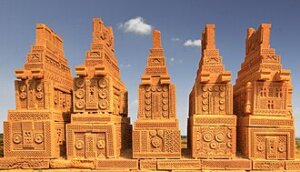
Located around 29 kilometers east of Karachi, the Chaukhandi sepultures are among the most unique and mysterious literal spots in the region. These sandstone sepultures, dating back to the 15th- 18th centuries, are the burial spots of the Jokhio and Baloch lines. What makes them special is their intricate busts and the geometric patterns etched into each gravestone arbor. The point, though not well- saved, offers a hauntingly beautiful regard into the funerary art and traditions of ancient lines.
Why visit Perfect for photography, literal disquisition, and quiet reflection
Manora Island – The Old Lighthouse and Colonial Traces
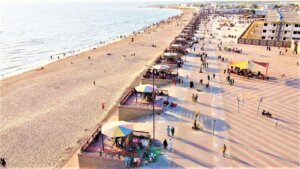
located off the seacoast of Karachi, is a retired gem steeped in history. From its ancient Hindu tabernacles to the 19th- century lighthouse and British- period service installations, the islet reflects multiple layers of Karachi’s history. Take a boat from Kemari and walk through narrow lanes, explore the social church, or relax by the sand while soaking in the literal air. Manora’s mix of societies and time ages makes it a truly unique experience.
Top attraction The Manora Lighthouse – still functional and offering panoramic views of the Arabian Sea
Wazir Mansion – Jinnah’s Birthplace
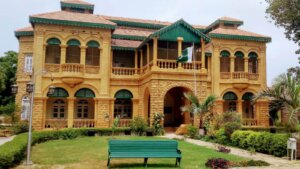
frequently overlooked, ** Wazir Mansion ** is a literal structure in Kharadar where Muhammad Ali Jinnah was born in 1876. This modest yet significant structure has been saved as a public monument. Now a gallery, Wazir Mansion displays bones, documents, and photos related to the life and heritage of the author of Pakistan. The restored structure gives callers a particular look into Jinnah’s early life and the humble onsets that led to a revolutionary movement.
Interesting fact The manse has a social- style innards and original rustic staircases that date back to the 19th century.
Merewether Tower – A Victorian Landmark
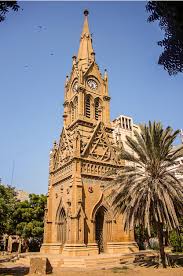
Erected in honor of Sir William L. Merewether, the Merewether Tower is a beautiful puritanical- style timepiece palace located at the junction of MA Jinnah Road and I.I. Chundrigar Road. Constructed in the 1890s, this 102- bottom-high palace was once the first major corner seen by callers arriving at Karachi Port. While it now stands girdled by ultramodern- day business and structures, it remains an architectural memorial of the megacity’s social history. It’s one of Karachi’s most Instagram- good literal structures.
Best for Street photography and armature suckers
Hindu Gymkhana – A Cultural Revival Site
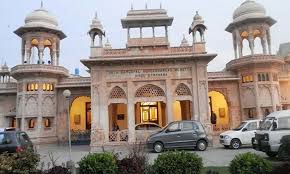
This stunning structure, erected in 1925 as a recreation club for the Hindu community, is a masterpiece of Mughal- Revival armature. With polls, bends, and symmetrical design, the ** Hindu Gymkhana ** structure has now been repurposed to house the National Academy of Performing trades( NAPA). It’s a great place to not only respect literal armature but also to witness live performances, theater, and music that reflect the artistic diversity of Karachi.
St. Patrick’s Edifice – Gothic majesty
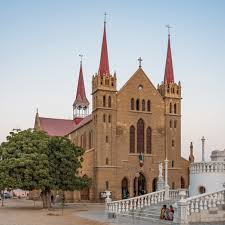
Located on Shahrah-e-Iraq, St. Patrick’s Edifice is the largest edifice in Pakistan and a literal point dating back to the 19th century. Its Gothic- style armature, stained glass windows, and soaring bell halls make it a striking corner. The edifice also houses a monument to Christian dogfaces who failed during the World Wars, making it not just a religious space but also a place of literal remembrance.
Conclusion Rediscover Karachi’s literal Heart
Karachi is further than just towers and seaports. It’s a megacity concentrated with centuries of stories, from ancient lines and social autocrats to independence and ultramodern elaboration. Exploring these top literal spots is like flipping through the runners of a living history book. Each structure, grave, or request holds secrets and tales that shaped not only the megacity but also the nation.
So, the coming time you are wandering through Karachi’s thoroughfares, take a moment to look beyond the present. The soul of the megacity is etched in gravestone, slipup, and memory — staying for you to explore.

